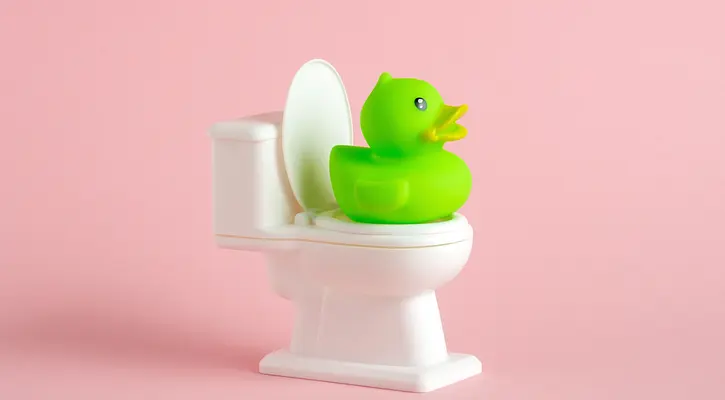Potty training is often a journey filled with pride, relief, and perhaps a few nervous giggles. But what happens when your child stalls out or hits a roadblock after what felt like solid progress? If your family is wrestling with the ups and downs of potty training—even after reading all the best tips—this supplemental guide is here to provide some extra support. Below, we’ll explore additional strategies to foster a gentle, encouraging environment that brings your child back on track.
1. Focus on the Emotional Side
Regression doesn’t happen in a vacuum—it often coincides with emotional changes or feelings of uncertainty. Children may not always have the words to express what’s unsettling them, but they might reveal it through potty training challenges.
- Check in daily: A short, focused conversation or cuddle session can help your child feel secure and heard. Ask, “How are you feeling today?” and listen for signs of worry or stress.
- Use playful communication: If direct questions make your child clam up, try storytelling or role-play with toys to explore feelings around potty time.
2. Look for Underlying Health Factors
Sometimes, accidents or refusals stem from physical discomfort or medical conditions. If you notice your child expressing pain while using the potty, or if accidents become unusually frequent, consider these steps:
- Consult a pediatrician: Rule out issues like constipation, UTIs, or other conditions that could be impacting potty success.
- Offer water-rich foods: Keeping your child hydrated and their diet fiber-rich can ease discomfort and foster regularity.
3. Build a Comfortable Environment
Little details can make a big difference. Ensure the potty setup is friendly, familiar, and comforting:
- Adjust the seat: If your child dangles their legs or feels unsteady, use a child-sized seat or add a stool for support. A sense of stability can reduce anxiety.
- Offer privacy: Some children thrive with a bit of alone time, while others prefer your presence. Ask your child what they’re comfortable with.
- Celebrate small comforts: Warm lighting, a familiar book, or even gentle music can turn the bathroom into a cozy space rather than a battleground.
4. Encourage Independence While Remaining Close
Balancing independence with reassurance can be tricky. Let your child take the lead whenever possible:
- Explain each step clearly: Walk them through flushing, handwashing, and getting dressed. Encourage them to do what they can on their own, while you remain available for support.
- Offer controlled choices: Let them choose their underwear design or decide which potty seat to use. Simple choices can empower them and reignite enthusiasm.
5. Emphasize Consistency in Routine
Though it was mentioned in the original article, routine truly is the lifeblood of successful potty training. Consistency sends the message that potty time isn’t optional—it’s simply part of the day:
- Schedule frequent visits: Even when progress stalls, keep the same schedule. If it used to work, give it time to work again.
- Use clear prompts: Gentle reminders like, “Let’s head to the potty before starting our puzzle!” help reconnect the dots between daily life and bathroom breaks.
6. Provide Calm Solutions for Accidents
Accidents can be emotional for both of you. A meltdown after a slip-up is natural, but the way you respond can shift how your child views the situation:
- Stay neutral and kind: Instead of reacting with disappointment, calmly say, “That’s okay. Let’s get you cleaned up. We’ll try again next time.”
- Normalize the mishap: Stories or examples of older siblings or friends who also had accidents can help reassure your child that they’re not alone.
7. Reinforce Every Progress Marker
No milestone is too small to celebrate. Did your child voice that they needed the potty, even if they didn’t make it in time? That’s progress worth praising!
- Make a “Ta-Da!” moment: Emphasize each step they get right, whether it’s pulling down pants independently or washing hands without prompting.
- Create a visual tracker: Stickers or stars on a simple chart can be surprisingly motivating for little ones, reinforcing the positive routine they’re building.
8. Utilizing Tools to Strengthen Your Approach
If you’re looking for a way to streamline and stay consistent, consider integrating some modern help. The Potty Whiz app offers features like progress tracking, potty reminders, and rewards—turning what could feel like a chore into an engaging, interactive game. It’s a handy supplement to all the strategies you’re already implementing and can help the whole family stay in sync on the potty progress journey.
Final Thoughts
Remember that potty training regression doesn’t mean you or your child have failed. It’s a detour on a path that, with understanding, patience, and a little creativity, still leads to success. By focusing on emotional well-being, consistency, and celebrating every small win, your child will gain the confidence to move forward.
And if you haven’t already, try out the Potty Whiz app to keep everyone motivated and on the same page—it might just be the extra spark you need to get your child back on track toward potty independence!






